Liangpi, also known as spicy cold skin noodles, is a cold noodle dish that was practically built for the summer heat. It’s hot, palate-cooling, and most importantly…VERY delicious.
Note: if you can’t find ready-made liangpi noodles at your local Chinese market, you can make them using our liangpi recipe!
WHAT ARE COLD SKIN NOODLES?
Cold Skin Noodles, or liángpí (凉皮) are wide, flat noodles, usually made from wheat flour (though rice flour can also be used) and served cold in a spicy dressing with cucumbers, cilantro, and bean sprouts. The word “liangpi” literally means “cold skin.”
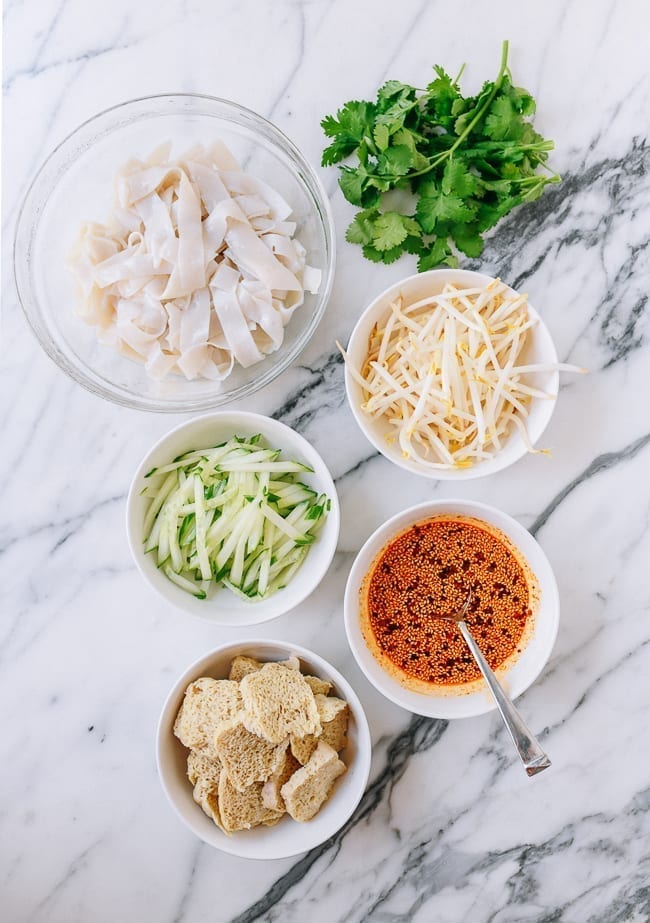
Served all year round across China, the dish originates in the northwestern province of Shaanxi, the capital of which is the city of Xi’An.
For those of you in the New York area, a little alarm bell of recognition may have just gone off in your head. Indeed, cold skin noodles are a staple on the menu of one of our city’s most popular chains, Xi’An Famous Foods!
In the fall and winter, I always order their spicy cumin lamb biang biang noodles, but in the spring and especially the dead of summer? I only have eyes for cold skin noodles––and a big cup of jasmine iced tea.
While I haven’t walked the streets of Manhattan in a while, eating these noodles always reminds me of walking to Xi’An Famous Foods for lunch on a 90 degree day. I inevitably arrive dripping with sweat, staring in disbelief at other patrons slurping down steaming bowls of noodles in hot soup.
My salvation lies in that plate of cold skin noodles, which I eat with several napkins unceremoniously tucked into my shirt as a bib (because I have no shame, and because I have a track record of ruining shirts with chili oil splatters) in between gulps of ice cold tea. Classy-like.
For me, it’s the PERFECT summer lunch.
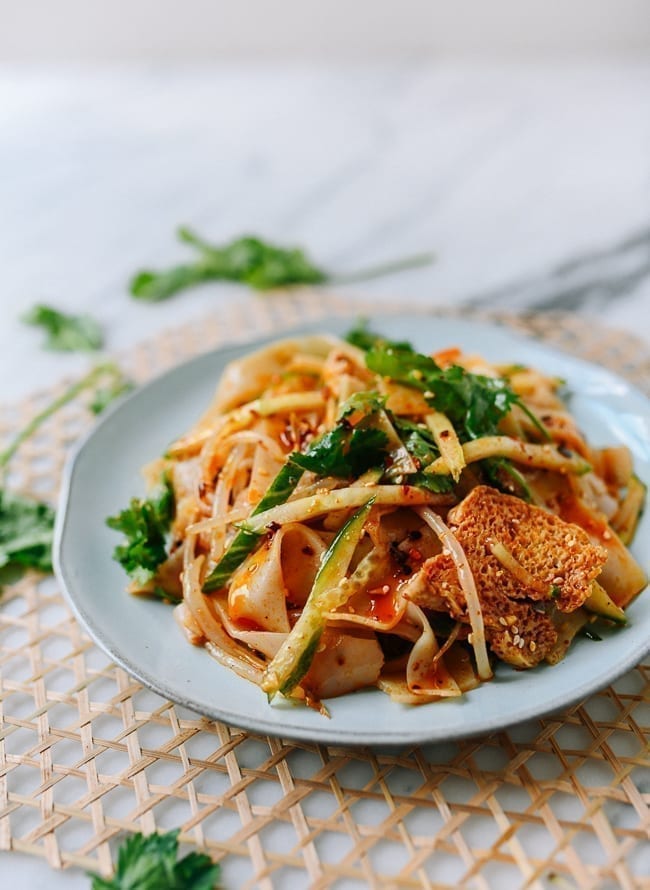
WHAT KIND OF NOODLES ARE LIANGPI?
Liangpi have a very particular texture. They’re a little chewy and bouncy, but not necessarily as elastic, as say, a regular noodle made from wheat flour (like our handmade noodles).
The liangpi-making process is actually quite fascinating, and sheds light on how it got its name. I got pretty familiar with it, as the liangpi I used in these photos was homemade! (I just published my liangpi recipe!)
You take regular all purpose flour, a little salt, and water to make a dough. Then, the dough is repeatedly “washed” or rinsed in water to release the starches in that dough. That starchy water is poured off and allowed to sit overnight so the starch can settle all the way to the bottom of the bowl.
That milky white starch is then mixed with fresh water to create a batter that you then steam in thin layers to create sheets of noodles, that do indeed look kind of like sheets of translucent “skin.”
You stack up those noodle sheets, slice them, and voila! Chewy, bouncy, noodles. If you can’t find fresh liangpi in your local Asian grocery store, you can make them if you have all purpose flour on hand!
If you’d rather not make them using our liangpi recipe, you can substitute boiled wide, flat rice noodles or mung bean noodles, which are readily available dried. You can also substitute fresh wide rice noodles.
A NOTE ON WHEAT GLUTEN
Another important element to this dish is wheat gluten, which has a spongy texture, almost like a tofu puff. The wheat gluten is a by-product of the liangpi-making process.
You use the starch to make the noodles. But what about the remaining gluten? Chinese cooks don’t let anything go to waste. They steam it, slice it, and add it to the dish! It adds great textural contrast. (Find out more about this ingredient in our Kao Fu Braised Wheat Gluten recipe).
But for now, you can buy pre-made noodles and wheat gluten in Chinese grocery stores. I’ve included a photo of the wheat gluten below, so you know what to look for!
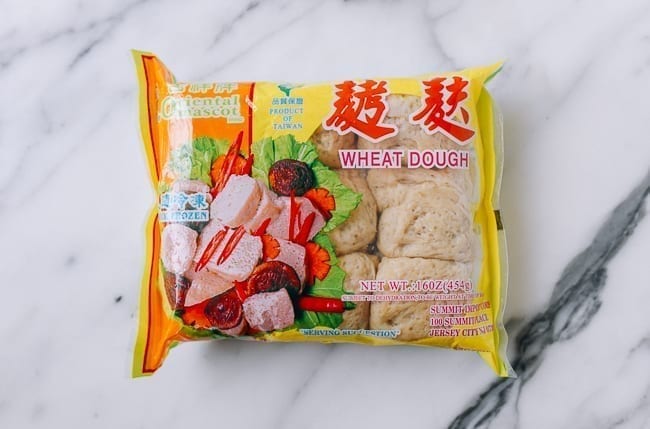
Ok, on to the recipe!
SPICY COLD SKIN NOODLES: RECIPE INSTRUCTIONS
Combine all sauce ingredients. Taste and adjust seasoning if needed.
Note that to get the best results, we highly recommend making your own chili oil. It’s a very simple process, and you’ll have plenty more for adding to fried rice, noodle soups, stir-fries, scrambled eggs, and tons of other recipes that also call for chili oil on our site!
If you’d rather not make your own, we recommend using Lao Gan Ma Spicy Chili Crisp here, or another high quality, flavorful chili oil of your choice.
Cook the noodles according to package instructions and add to a large mixing bowl. Steam or blanch the bean sprouts and wheat gluten. If steaming, steam for about 5 minutes over high heat. If blanching, you can do so for about 30 seconds. Add them to the bowl with the noodles, along with the cilantro and cucumber.
Pour the sauce into the mixing bowl…
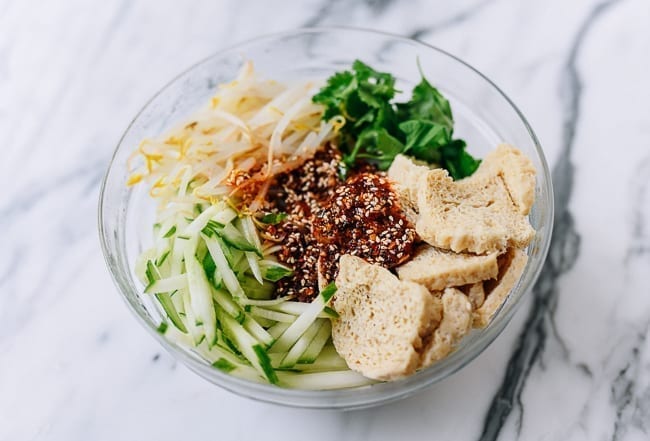
And toss everything together.
AD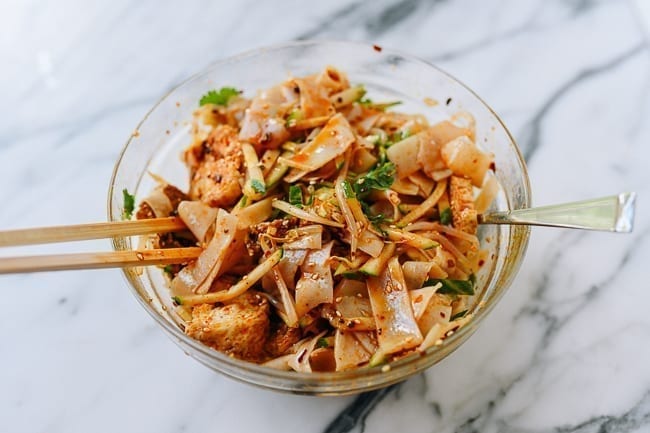
Taste once again, and adjust seasonings. Feel free to add more vinegar, soy sauce, salt, chili oil, or sugar to your liking. Serve!
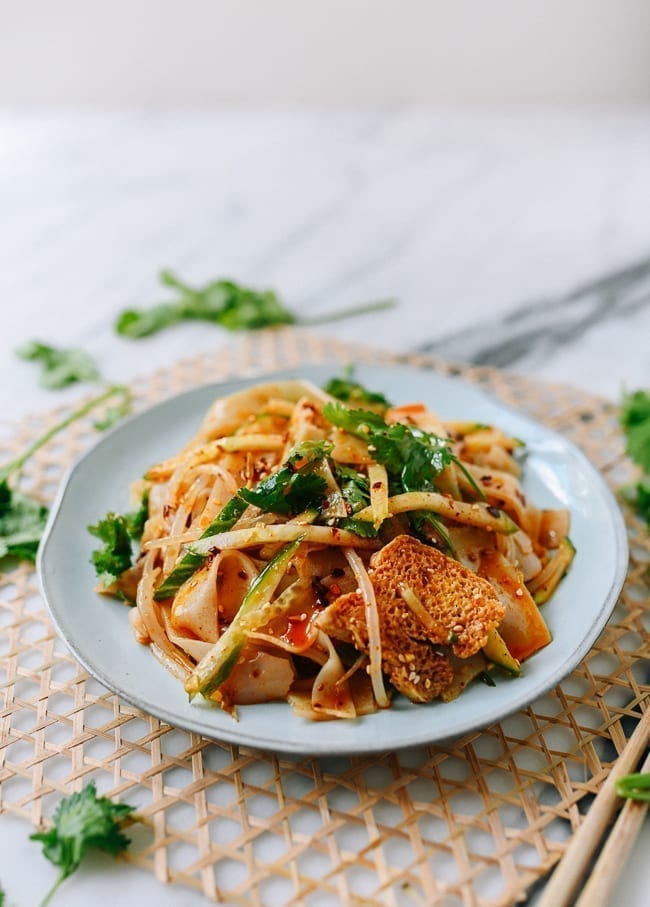
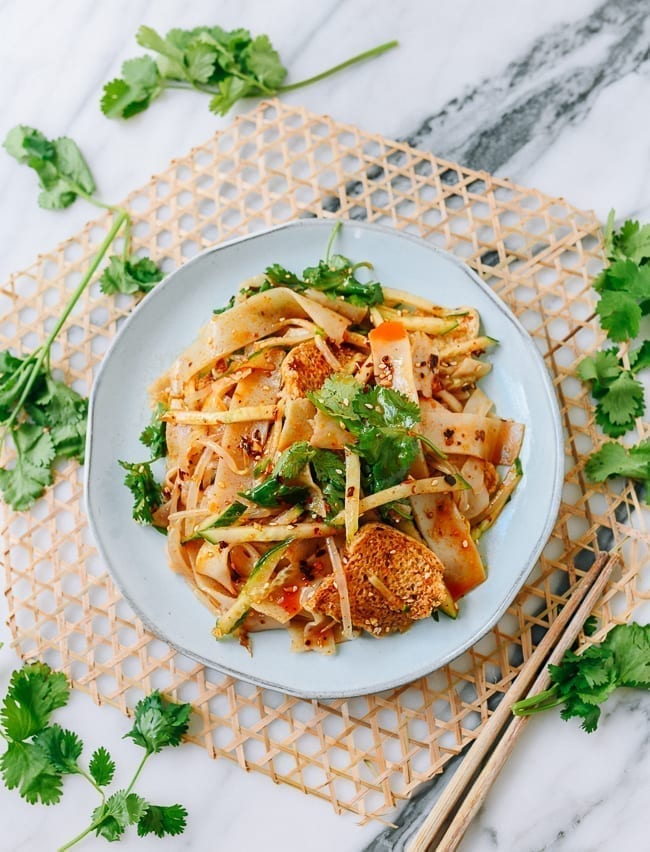
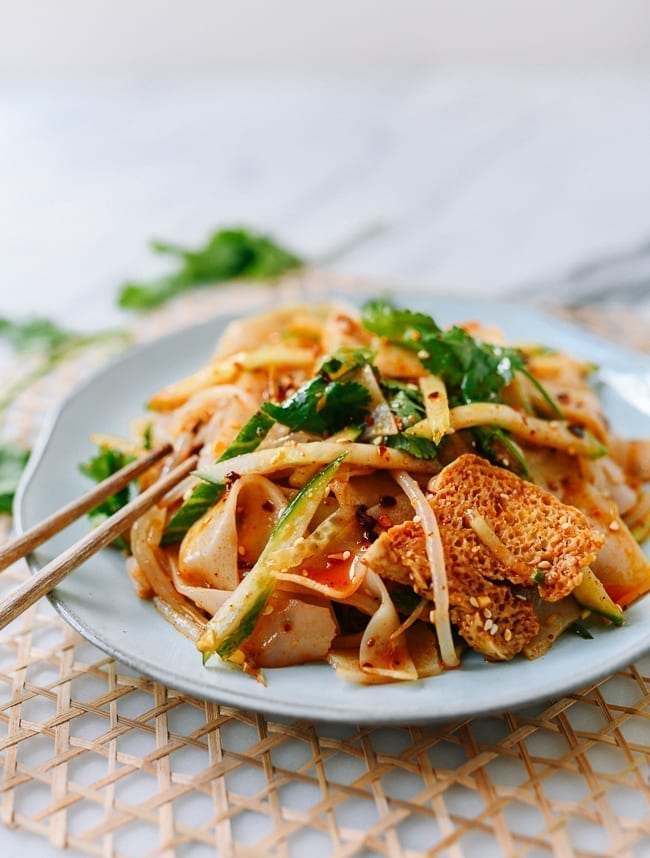
Source: https://thewoksoflife.com








